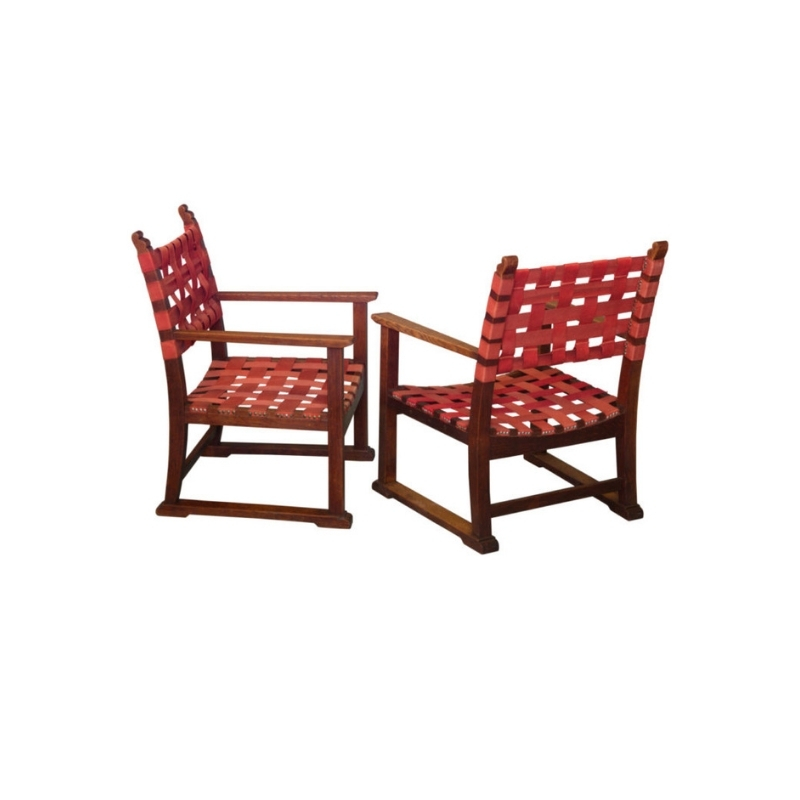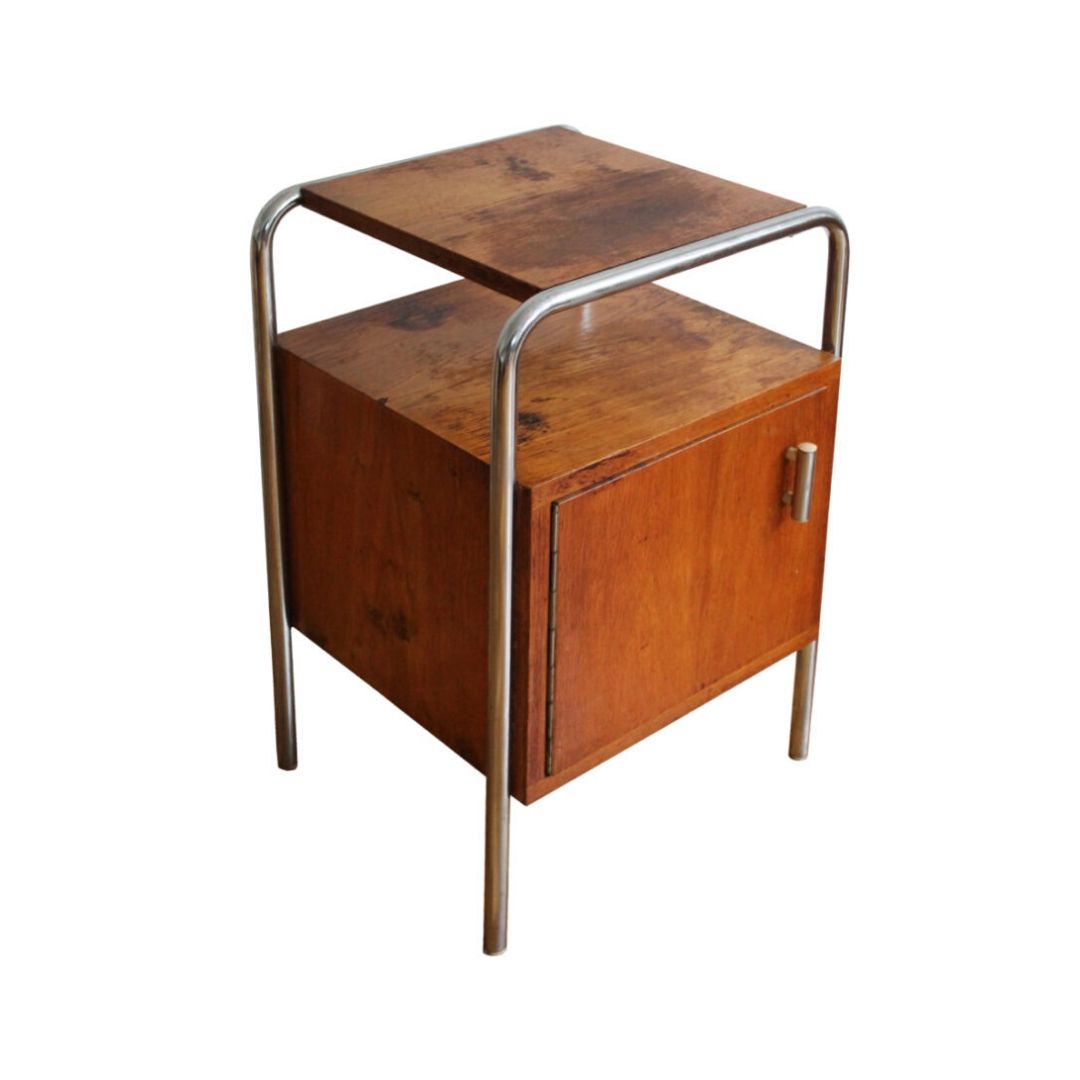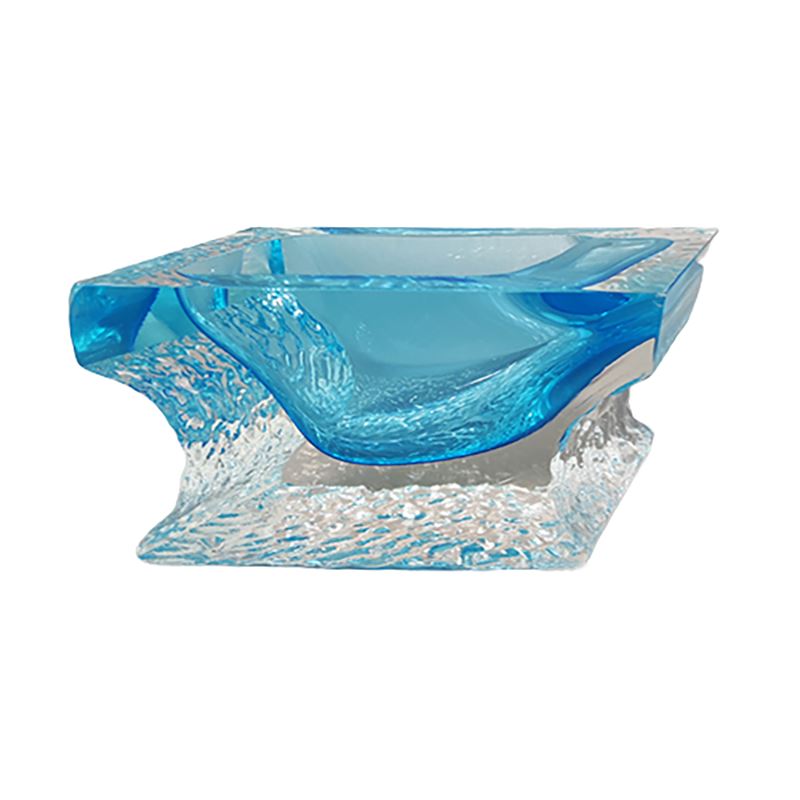Hi all, I recently acquired a first series Eames Lounge Chair which needed some repair on the shock mounts so I had to disassemble the chair. When I compare it with my 2010 production side by side, I notice that the shape of the seat pan has changed over the years, with the newer productions having a higher and wider area where the shock mounts are adhered (see pictures). Another observation I made is how the shock mounts on the first series were set very much level to the edge of the plywood whereas the every other Eames Lounge Chair I've come across has the shock mounts positioned further in. I'm an enthusiast and would love to hear your experience in regards to production changes. So please chime in!
http://www.flickr.com/photos/87435282@N05/8475798653/in/photostream/
Hello, congratulations on...
Hello, congratulations on your new find! Regarding the details, you undoubtedly have yourself a chair with shock mounts that another owner has already tinkered with. After 25-50 years, the shock mounts tend to need replacement and many think "how hard could it be". They then proceed to DIY the job and do a poor job. This is the case with your shock mounts. It does not appear that any harm was done, though take into consideration that the positioning of the mounts is incorrect. Otherwise, the boots for the ottoman look proper. I have been fortunate enough to own a solid number of 670's and 671's from varying generations. From the earliest productions until today, the plywood shells have remained identical with small changes taking place to hardware, leather type, and stuffing along the way (all done to improve the design, as was the Eames way). Enjoy, its a beauty!
Thanks, David, for your...
Thanks, David, for your insight. However, I'm now more baffled because if what you said is true about the plywood shells having stayed identical from the first day of production, how does one explain the difference in the shape of the seat pans? In fact, after I read your post, I went on to compare the back rests between my first series and the newer production. The first series is also smaller, with the narrower and pointier "wings" where the shock mounts are located (see pictures).
It's amazing how much there is to learn about this chair. Thanks!
http://www.flickr.com/photos/87435282@N05/with/8490163336/#photo8490163336
I'm actually rather baffled...
I'm actually rather baffled as well. As far as I know, the plywood shells have been the same since 1956 production and I believe the molds are still the same spec in the Herman Miller factory today. Would you be able to take a larger grouping of pictures of your chairs and its parts. I can put together some clues and potentially pinpoint whether pre-production seems possible. Pictures of the rubber components, chair glides, ottoman overall, cushions, and labels will be very helpful.
I actually have a chair that I know to be from the earliest production model and it does not have those pointy wings, nor does my 80's chair...60's chair...late 50's chair. Generally this would raise a red flag, however, the quality, components, and age of yours appear correct. I am curious and excited to see!
Thanks David, for your...
Thanks David, for your pointers. I was a little freaked out at first when you mentioned a red flag because I've fallen victim to a malicious and shameless seller with a very well made reproduction. Anyway, I posted more pictures on the link. Everything seems spot on: the boot glides, 3-hole steel plates for the arm rests, 50% down and 50% feathers cushions, round clips, vintage leather, 6 rubber spacers for the aluminum support, A-face of the plywood matching the inside, etc. On the bottom of the chair and ottoman, the patent labels are still present, but the tags seem to have fallen off. I also posted a picture of a first series just for your comparison.
I honestly am not worried about the authenticity of this chair because everything else seems perfectly accurate; rather, I'd be interested to see if David is right about the possibility of a prototype or a pre-production. This is so much fun!!
I appreciate your contributions!!
http://www.flickr.com/photos/87435282@N05/
Could you take some...
Could you take some additional pictures still as well? One of the early chair's glide (the chair, not the ottoman) completely detached/unscrewed from the chair. Also, a picture of the ottoman's side profile, a picture of the remaining labels, and a picture of any remnants of a tag/label/medallion just to hopefully find out what shape the label would have been. That should all be very helpful.
The other images are bringing us in the right direction, these will hopefully give us the final clues.
Detective David, here are...
Detective David, here are more pictures =) While taking the pictures, I had another new discovery. The old and new ottoman bases are also different, with the first series 4-star base being set a little lower than the new production. In fact, I believe it's the same case for the chairs too although I haven't directly compared. Please look at the comments on I put below the pictures on the link because I had some comparison pictures between the old and newer chairs.
Anyway, thanks for fueling my enthusiasm for this beauty! I appreciate every comment!!
http://www.flickr.com/photos/87435282@N05/
Well, I have good news and...
Well, I have good news and expected news. The good news is that your chair is in fabulous condition for its age. The bad news is that you do not have the absolute earliest or pre-production version of this chair. Your ottoman does not swivel, which is one telling sign. The second is that your chair feet have the standard thread, which has been used from (probably later) 56' onward. The oldest version has a skinnier thread on the base of the chair. Lastly, you have Herman Miller labels, which I assume would not be present if it was a pre-production piece. Nonetheless, what you do have is a stunning 1956 Eames Lounge, which should make every collector jealous. Be proud, love it, care for it, and do not restore it if at all possible! The finish on yours is still gorgeous and looks to be original. I believe those were nitrocellulose, instead of oiled, which later chairs have. Enjoy!
I'm a proud owner =) I think ...
I'm a proud owner =) I think you're right, David, that I should keep it as original as possible. But my chair has some worn out shock mounts which I'll have to replace in order for it to be functional again. The parts are on the way and I'm excited about this project!!
One thing I'm still unsure about is the position of the shock mounts because with the pointy and smaller wings on the back rest, I don't think the mounts can be placed any further in without reaching the curved area of the plywood. Obviously, the mounts cannot be adhered to a curved surface. Ill find out more after i remove the old mounts and try to position the new ones differently and see if they'll fit. Did you get to find out whether there're other productions with this kind of back rest and shock mount position?
If you don't mind, I hope you can also share some of the pictures you may have of your collection and any relevant literature/information because like I said before, I just want to broaden my perspective on this beauty.
If you prefer, you can email me the information instead.
kin1117 at hotmail.com
Thanks for your sharing.
Vitra launched a larger size lounge chair in the last few years on the basis that your average human height had increased since the chair was designed.
I think it has slightly bigger back and headrest shells.
I walked past one on display in the Conran store a few weeks ago and had to do a double take, it just looks awkward.
I know that Vitra and HM...
I know that Vitra and HM differ in dimensions. But I haven't heard dimension changes in productions within HM though. I'd love to hear more about it. In fact, once I complete restoring my 1956 Eames Lounger, I'll do a direct comparison between it and my 2010 production. That'll hopefully give some insight into it. I'm excited!
We should really compile our ...
We should really compile our resources and known identifications into a database. For things like the 670/671, those of us who know our production dates could provide measurements and any unique details. With a large enough sample size we could better track when changes occurred as well as make more accurate IDs.
If you need any help, please contact us at – info@designaddict.com









